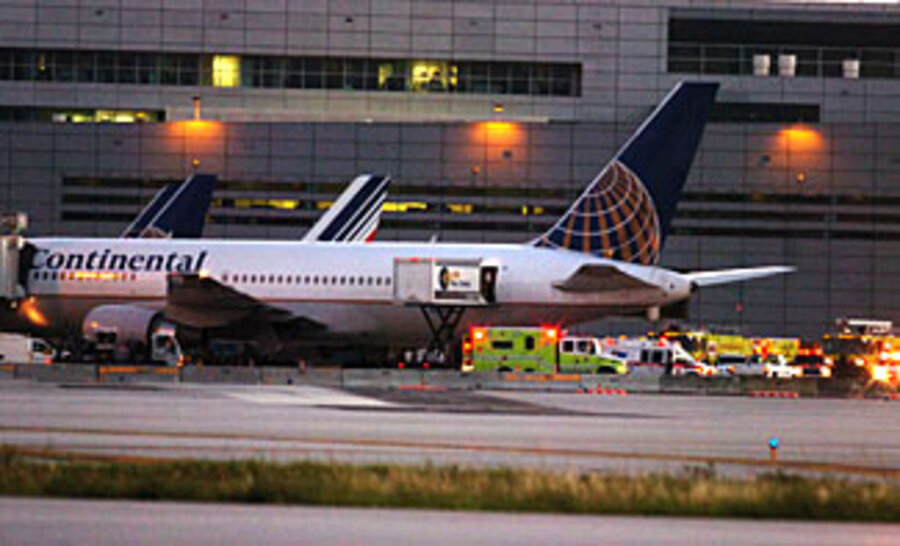Turbulence is leading cause of air flight injuries
Loading...
| New York
If you've ever wondered why pilots and flight attendants are adamant about keeping your seat belt fastened during flight, just look to Miami Monday morning.
Federal Aviation Administration (FAA) inspectors are currently examining a Continental Airlines plane that made an emergency landing there at dawn after 26 people were injured, four of them seriously, due to severe turbulence.
Flight 168 originated in Rio de Janeiro and was headed to Houston with 168 people on board. According to the FAA, the plane hit severe turbulence about 4:30 a.m. and diverted to Miami, landing about 5:30 a.m.
Most of those injured suffered bumps and bruises, but four were hurt seriously. Thirteen people were taken to the hospital. Airport officials say the remaining passengers will travel on other Continental flights to Houston later Monday.
Aircraft are designed to withstand severe turbulence. For pilots who routinely fly several times a day, turbulence is a common occurrence. Severe turbulence, the kind that can cause injuries, is less common, but it's not as rare as one might think. According to the FAA, turbulence is the "leading cause of injuries to airline passengers and flight attendants" in nonfatal accidents.
Approximately 60 people a year get hurt due to turbulence-related incidents. The primary reason: They're not wearing their seat belts.
From 1980 through June 2004, US air carriers had 198 turbulence accidents, resulting in 266 serious injuries and three fatalities, according to the FAA website. "At least two of the three fatalities involved passengers who were not wearing their seat belts while the seat belt sign was illuminated."
In April, a woman was partially paralyzed after she got up to use the bathroom on Continental Flight 511 from Houston to McAllen, Texas. The seat belt sign was illuminated, but other passengers were using the bathroom and she told NBC's Matt Lauer that she didn't think a quick trip would be a problem. But just when she was in the bathroom, the plane hit a pocket of severe turbulence and she was thrown up against the ceiling.
That accident occurred after the plane had started the descent for landing. But generally, two-thirds of turbulence-related accidents occur at or above 30,000 feet, according to the FAA. That's when many passengers believe it's best to kick off their shoes, loosen the seat belt, and relax.
There's no reason not to relax, say aviation experts, but it is also crucial to pay attention to the seat belt sign. When it's illuminated, be sure to buckle up.
---
Follow us on Twitter.





